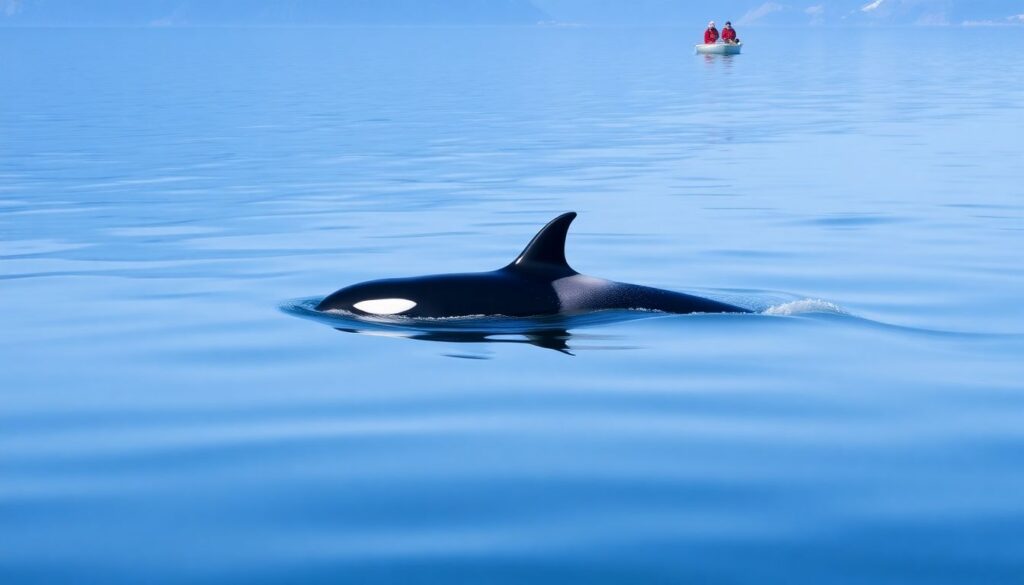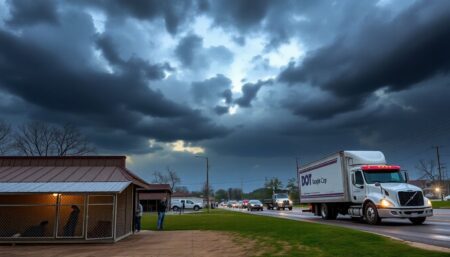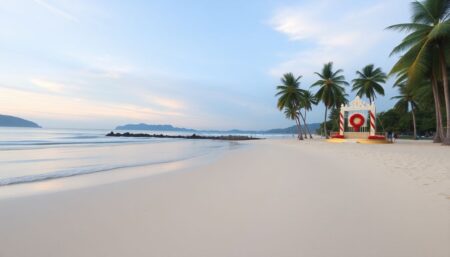Delve into the captivating world of orcas with our latest article, which explores the bittersweet news of a new orca calf spotted in the Salish Sea. Join us as we navigate through the concerns voiced by researchers and the critical role we play in ensuring the survival of these magnificent creatures.
Exploring the delicate balance between hope and concern in the world of orca conservation
Imagine the vast, serene waters of the Salish Sea, where the sun gently kisses the waves, creating a shimmering tapestry of blues and greens. In this tranquil haven, a magnificent orca calf swims gracefully alongside its mother, their synchronous movements a dance of love and guidance. The calf, with its youthful energy, stays close to its mother’s side, learning the secrets of the sea in every shared breath and flip of the tail.
The bond between the orca mother and her calf is a testament to the profound connections that exist within the natural world. Their every interaction, from the tender nudges to the protective shield the mother provides, speaks volumes about the intricate web of life that thrives beneath the waves. This serene scene is not just a moment of beauty but a glimpse into the complex social structures and deep familial ties that define these majestic creatures.
In the distance, researchers observe this delicate dance with a mix of awe and responsibility. Their presence highlights the delicate balance between nature and human intervention. They are not mere spectators but stewards, committed to understanding and preserving the fragile ecosystems that support these magnificent beings. The researchers’ careful observation and study represent the harmonious coexistence of humans and nature, where respect and conservation go hand in hand, ensuring that the orcas and their kin continue to thrive in the vast, serene waters of the Salish Sea.
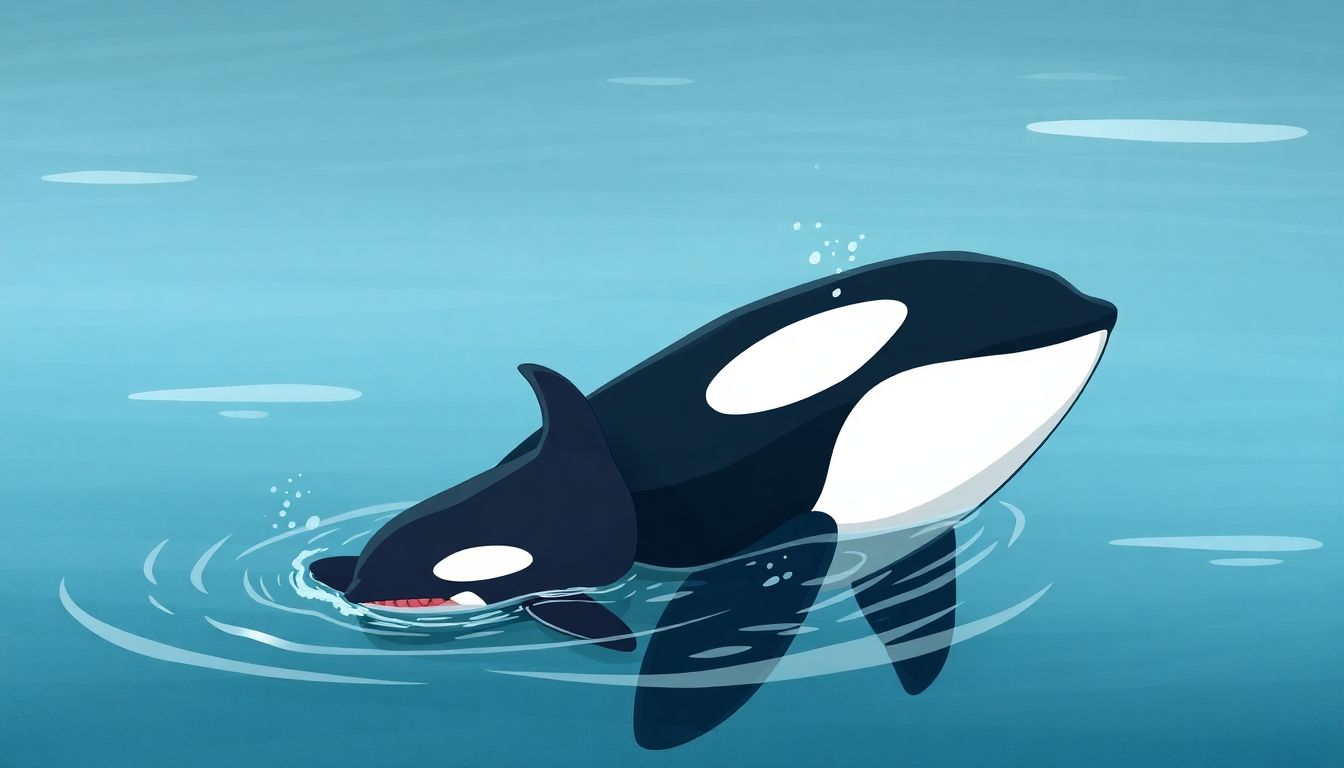
A New Hope in the Salish Sea
In the vibrant waters of the Pacific Northwest, excitement is bubbling over with the thrilling discovery of a new orca calf, J61, born to the beloved matriarch J35 Tahlequah. This isn’t just any birth; it’s a beacon of hope for the endangered Southern Resident killer whales, whose population has been dwindling in recent years. The confirmation of this joyous news came from the Center for Whale Research, a dedicated team of scientists who have been meticulously studying these magnificent creatures for decades.
The first observations of the newborn calf were made by SR3 SeaLife Response, Rehabilitation, and Research, a non-profit organization committed to the conservation of marine wildlife. Their initial reports painted a heartwarming picture: J61 swimming energetically alongside its mother, with other members of J pod welcoming the newest addition to their tight-knit family. This birth is particularly significant as it follows a challenging period for J35, who gained global attention in 2018 when she carried her deceased calf for 17 days in an unprecedented display of mourning.
The arrival of J61 brings a glimmer of hope for the Southern Resident killer whales, a population that has faced numerous challenges, including:
- Declining food sources, particularly Chinook salmon,
- Environmental pollution,
- Noise disturbances from increased vessel traffic.
Each birth is a step forward in the ongoing efforts to preserve and protect these incredible animals. With J61’s birth, the Southern Resident population now stands at 74 whales, a modest increase that nonetheless inspires optimism among researchers and conservationists alike.
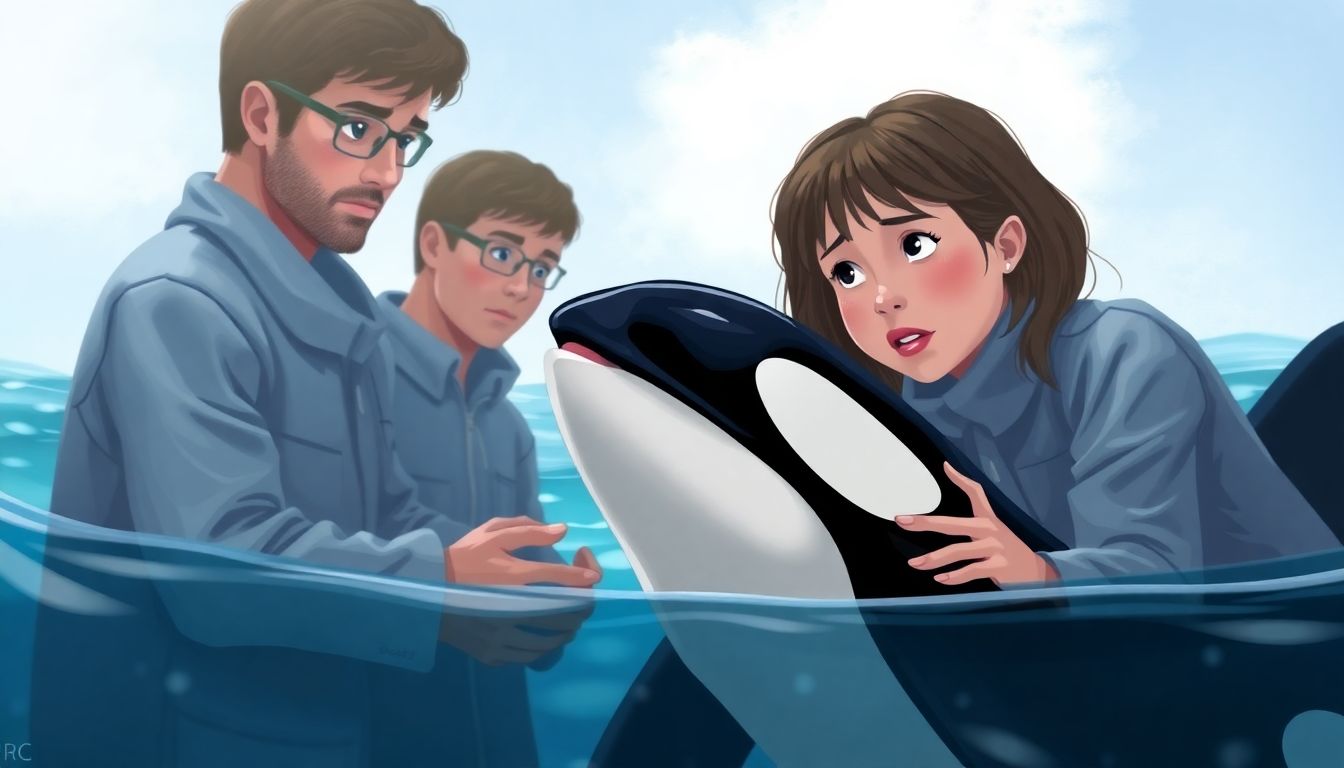
Concerns and Challenges
In the sprawling waters of the Pacific Northwest, a dire situation unfolds, capturing the hearts of researchers and wildlife enthusiasts alike. The plight of J61, a premature southern resident killer whale calf, has sparked grave concerns among scientists. Born to Tahlequah (J35), the calf has been observed in a severely premature condition, raising worries about its survival. Researchers have noted that J61 appears emaciated and lethargic, lacking the robust health typically seen in newborn calves.
Tahlequah, the mother, is also cause for alarm. Post-pregnancy, her body condition has been assessed as subnormal, indicating she may not be producing enough milk for her calf. This malnutrition could be due to the scarcity of Chinook salmon, the primary food source for southern resident killer whales. The interconnectedness of the ecosystem is starkly evident here—the decline in salmon populations has a direct and devastating impact on these magnificent marine mammals.
NOAA researchers have made several troubling observations. They’ve noted that J61’s dorsal fin, while small, is already showing signs of collapse, a condition rarely seen in newborns but common in undernourished adults. Additionally, the calf’s breathing appears labored, another indicator of its struggling health. Observations also suggest that Tahlequah is having difficulty keeping up with her pod, a critical factor for their social and feeding behaviors.
The situation underscores several pressing concerns:
- The health of both mother and calf, each dependent on the other for survival.
- The availability of prey, a persistent challenge for the southern resident killer whale population.
- The broader implications for the endangered species, with each successful birth being a beacon of hope for their recovery.
As researchers continue to monitor J61 and Tahlequah, the world watches and hopes for a turnaround, a glimmer of resilience from these iconic creatures of the sea.
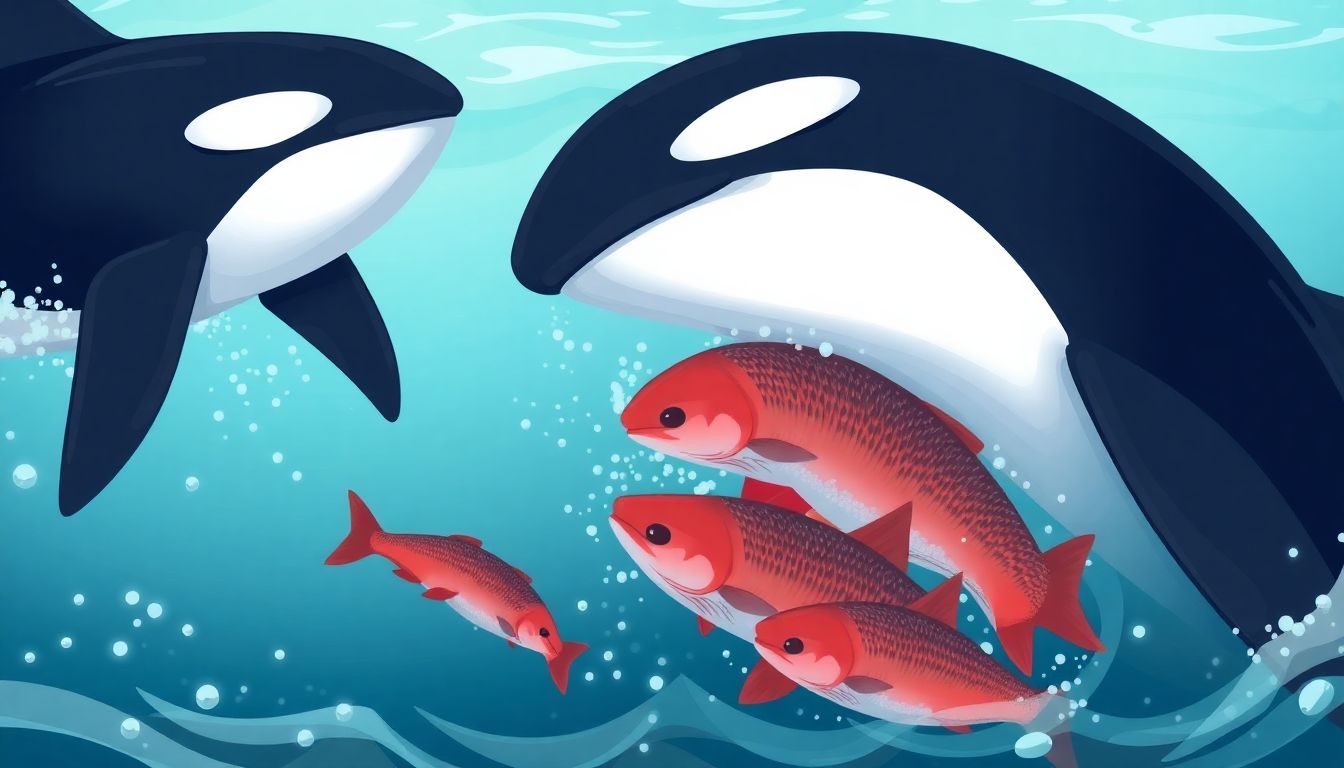
The Critical Role of Salmon Stocks
Salmon stocks play a pivotal role in the survival and growth of orca populations, serving as their primary food source. Known as the ‘Southern Resident Killer Whales,’ the orcas that frequent the Pacific Northwest waters rely heavily on Chinook salmon, which make up about 80% of their diet. The declining salmon populations in this region have raised significant concerns among conservationists, as this directly impacts the orcas’ ability to thrive and reproduce.
According to the Orca Conservancy, the Southern Resident orcas are among the most endangered marine mammals in the world. With only around 73 individuals left, the conservation of salmon stocks is not just an ecological issue, but a matter of survival for these iconic creatures. The Orca Conservancy emphasizes that restoring salmon habitats and implementing sustainable fishing practices are crucial steps in ensuring the long-term viability of orca populations.
Howard Garrett, Co-founder and Board President of Orca Network, provides valuable insights into this complex issue. He argues that the decline in salmon stocks is largely attributable to human activities such as:
- Overfishing
- Habitat destruction
- Hydroelectric dams that obstruct salmon migration routes
- Climate change
Garrett stresses that addressing these issues requires a multi-faceted approach, involving policy changes, public awareness, and collaborative efforts between governments, NGOs, and local communities.
One of the key solutions proposed by Garrett and the Orca Network is the restoration of natural salmon runs. This involves rehabilitating rivers and streams, removing barriers to fish passage, and enhancing estuary habitats. By doing so, we can increase the abundance and genetic diversity of salmon populations, thereby providing a more robust food source for orcas. Additionally, promoting sustainable fishing practices and reducing bycatch can help maintain healthy salmon stocks and support the recovery of orca populations.
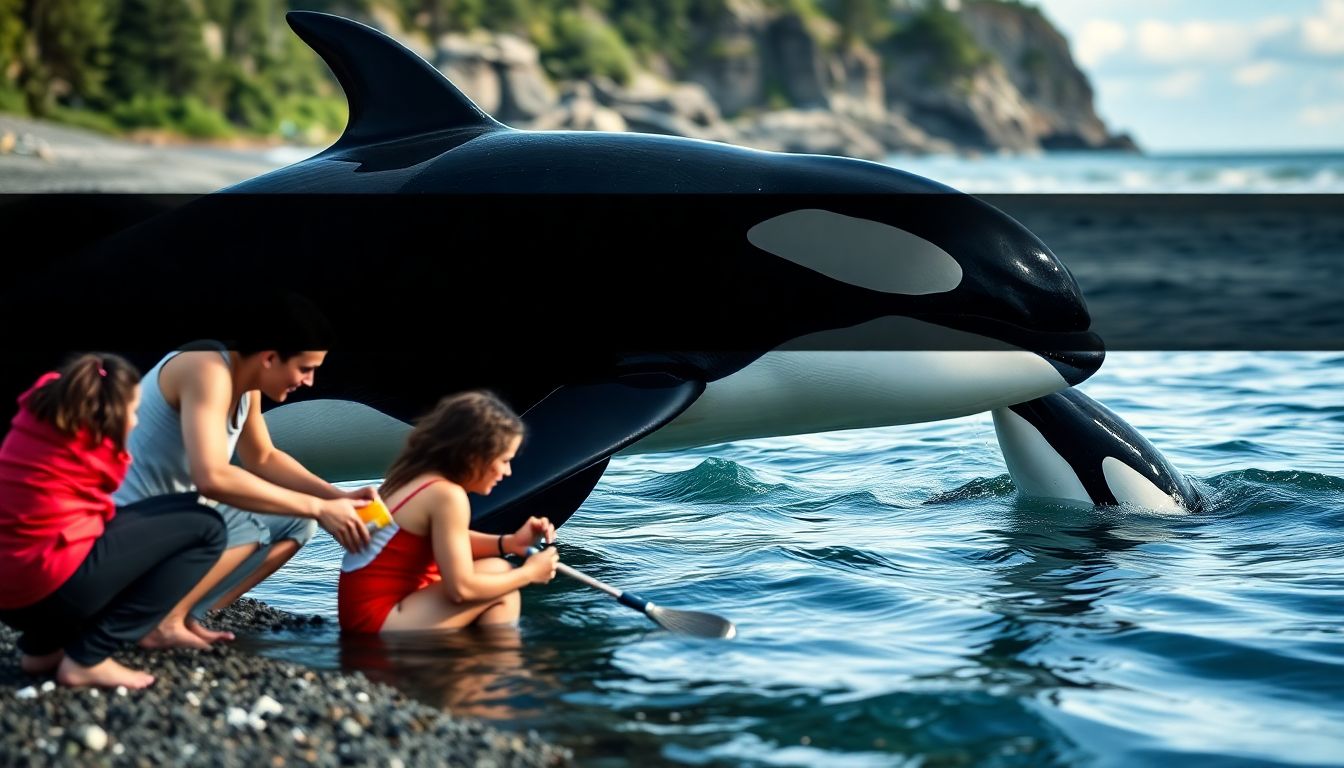
Our Part in Orca Conservation
Orcas, the magnificent apex predators of the sea, are facing significant threats due to human activities. To support orca conservation, individuals can take several impactful actions. Education and awareness are key; learn about orcas, their habits, and the challenges they face. Share this knowledge with others to spread awareness. The SeaDoc Society, a vital organization in marine wildlife conservation, recommends several actions to protect orcas.
One of the primary recommendations from the SeaDoc Society is to reduce, reuse, and recycle to minimize waste, especially plastics, which often end up in our oceans. Additionally, participating in or organizing beach cleanups can directly improve orca habitats. Limiting the use of chemical pesticides and fertilizers can also help, as these often find their way into water systems and negatively impact marine life.
Another crucial aspect of orca conservation is being mindful of seafood consumption. Orcas, particularly the Southern Resident killer whales, rely heavily on Chinook salmon for their diet. Here’s how you can help:
- Choose sustainably caught seafood to minimize depletion of orca food sources.
- Consider reducing salmon consumption or opting for alternatives, as the decline in salmon populations directly impacts orca survival.
- Support initiatives aimed at restoring salmon habitats and promoting sustainable fishing practices.
Lastly, supporting organizations like the SeaDoc Society, World Wildlife Fund, and other marine conservation groups can make a significant difference. Your contribution can fund research, conservation efforts, and public education. Moreover, engaging with local policymakers to advocate for stronger environmental regulations can help protect orcas and their habitats in the long run.
FAQ
Why is the survival of the new orca calf, J61, a concern?
What role do salmon stocks play in the survival of orca populations?
How can individuals support orca conservation efforts?
- Choosing safer cleaning products
- Properly disposing of dog poop
- Washing cars at a carwash instead of driveways
- Using public transportation
- Promoting salmon restoration initiatives
. While removing salmon from diets is a symbolic gesture, focusing on these practical actions can have a more significant impact.
What are the main threats to the health and reproduction of orcas?
- Bioaccumulation of organic chlorine pollutants
- Flame retardants
- PCBs (polychlorinated biphenyls)
- The scarcity of Chinook salmon
. These factors combined pose significant challenges to the survival and reproduction of orca populations.



